How to Get Rid of Grass in Your Vegetable Garden: 8 Methods That Work
-
Pete Ortiz
- Last updated:
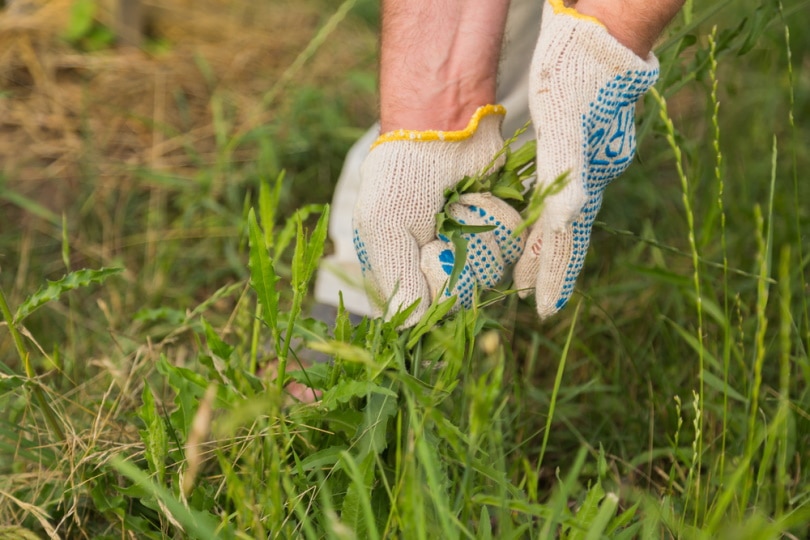
There are various reasons why you may want to get rid of grass from your garden. It may be choking your vegetables, taking over your lawn, or is a sore sight among your flowers. There are over 900 types of species of grass-like plants spread throughout America, making it one of the most common weeds you can encounter in a vegetable garden.
The most notorious grass species that has been giving gardeners a headache for years is couch grass, also known as twitch grass. When this grass finds its way into your precious vegetable garden, its creeping stems will form a dense network under the soil and knot themselves around the roots of other plants. This will consequently rob your vegetables of the soil space and nutrients essential for survival.
In a bid to curb these problems, it’s only necessary that you find ways of getting rid of the grass. In this article, we discuss why you need to remove grass from a vegetable garden and give some of the most effective ways to do it.
Why Kill Grass in Your Vegetable Garden?
Before we explore the various methods of getting rid of grass in your garden, you need to know why it is a necessary endeavor.
Grass Is a Creeping Plant
Grass grows by spreading its rhizome through the soil and the stems forming above the soil. Creeping grass can grow so fast that it can spread to areas not intended for the plant. If the grass spreads into your vegetable garden, the only way to save your plants is to cut or kill the grass.
To Save Money and Time
Caring for a vegetable garden is a laborious and costly affair. When grass densely grows in it, you have to mow, edge, remove weeds, aerate, and fertilize the plants to keep them healthy. Moreover, you may have to outsource some labor from landscapers, which can be costly. So, you have to regularly remove the grass before it chokes and kills your plants.
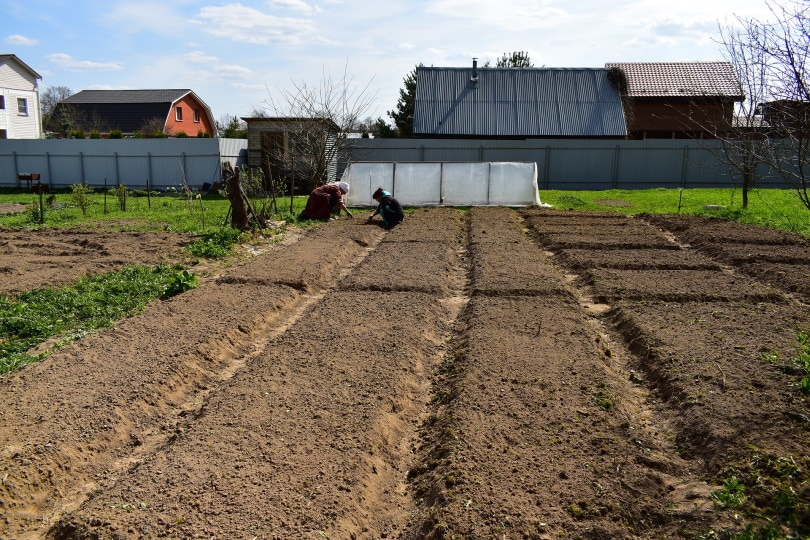
To Reduce Water Consumption
Vegetable gardens need at least 50% of water to thrive. The best way to reduce water consumption is to get rid of weeds like grass that have invaded your vegetable patch.
To Enhance the Vegetable Garden
If you have limited garden space, you should kill any grass growing in the patch to enhance your plant’s productivity. A well-maintained garden can produce lots of food for your family. So, killing grass is a great way to enhance your vegetable garden and improve productivity.
The 8 Effective Methods of Getting Rid of Grass in a Vegetable Garden
You might be tempted to use common chemical weed killers but in doing so, you could end up harming or killing the surrounding plants. Chemical weed killers also affect the soil’s biodiversity.
Fortunately, there are eco-friendly methods that you can employ. However, they are laborious and require a bit of time to control the grass. Though not recommended, chemical herbicides can also kill grass in your garden, but only use these herbicides as a last resort. You can also use a combination of cultural, mechanical, and chemical grass control methods for optimum results.
Below are some recommended ways:
1. Physically Pull the Grass Out with Your Hands
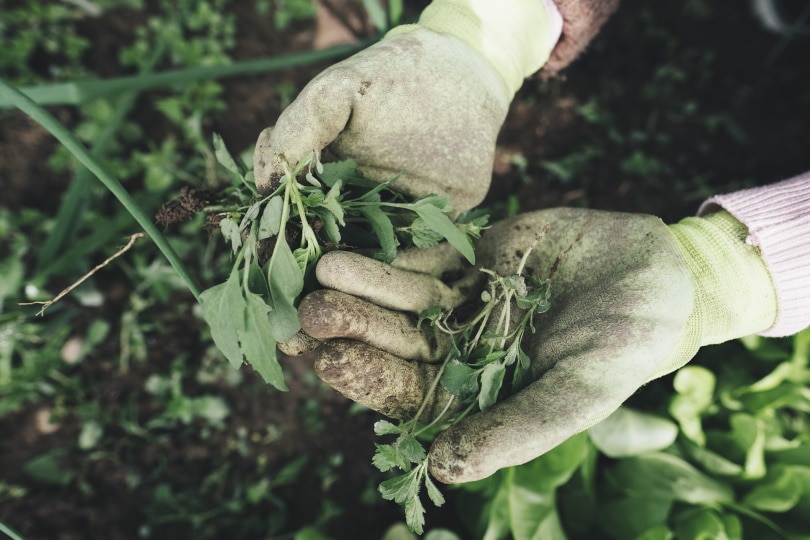
Pulling grass out of the vegetable garden is one of the easiest and most common ways of getting rid of grass in your compound. It is ideal for people who prefer a more hands-on approach to weeding their vegetable patches. With the help of a spade or spatula, you can uproot grass from the garden and then dispose of it by bagging and dumping it in the trash bin.
Though organic, this method takes a lot of time, especially if you have to remove densely growing grass from a large vegetable patch. Also, you must remove every piece to destroy all the grass in your garden. Otherwise, the grass can root itself, re-seed and spread further in your garden.
For optimum results, you should wait until the grass is withering before attempting to uproot. Then, remove the dead grass and add it to your compost heap. If you regularly uproot the grass growing in your garden, you will gradually control its spread and eradicate it.
2. Solarization
Solarization is a long-term process that removes grass, especially the crabgrass species, permanently. This method simply uses the power of the sun to kill the grass. The process involves covering the grass with a newspaper, plastic, or cardboard to trap the sun’s energy and heat the soil.
Depending on the time of the year and the smothering material, this method can take several months to work. It works best during the hot summer seasons and is best for preparing a vegetable garden before planting. Also, it usually works better if you use a transparent tarp cover made from polyethylene instead of black or white plastic sheets. Newspaper and cardboard pieces may not heat the ground as much as plastic, but they eliminate light, causing chlorophyll to break down, gradually killing the grass.
After covering the grass, the ground beneath the covering will heat up so high and scorch the grass, weeds, and soil bacteria. In about four weeks, all the grass should begin to break down and dry up. Dig out the dead grass, add it to compost, and make your garden bed. To kill grass using this method, simply cover the entire ground with plastic except for the holes intended for planting. Finally, secure the plastic by holding it down with some pieces of rocks.
3. Use Vinegar
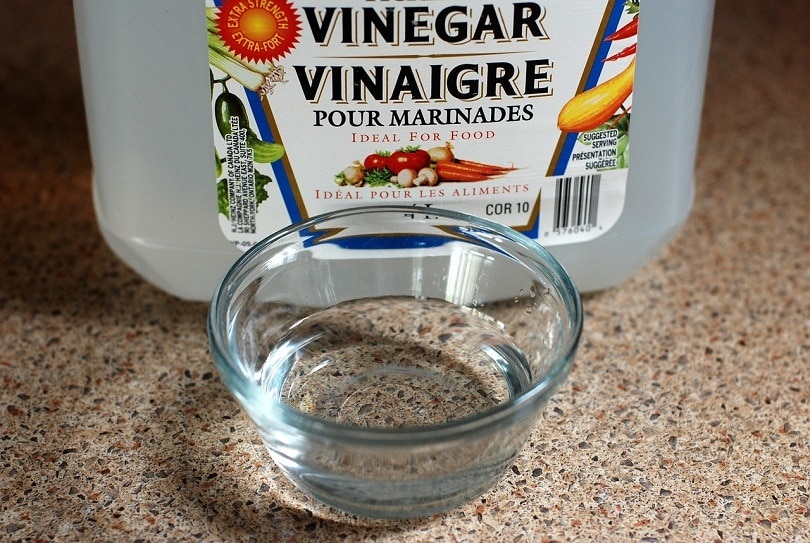
Pure vinegar is one of the most efficient products for getting rid of grasses from a vegetable garden. This homemade weed killer destroys grass from the ground level. It is, however, not particular about the plants that it targets. It dries out all the plants in its path, stopping them from circulating the much-needed moisture throughout the rest of the plant.
- For optimum results, use pure vinegar with a high concentration (15–20%) of acetic acid, such as horticultural or cider vinegar.
- While not often recommended, white vinegar is equally as useful in killing grass in your vegetable garden.
All these vinegar varieties are affordable and readily available in your local grocery store. You can also add dishwashing soap to the vinegar to break up the surface tension and allow the vinegar to adhere to the plants. This method works best when vinegar is sprayed on a sunny day to dry the grass even faster.
Even though vinegar works well when applied to the plant on the soil’s surface, it is not always successful at eliminating the grassroots. It simply kills the plant on top of the soil, which makes it easier for the gardener to extract the plant. However, regularly spraying the grass with vinegar will deny the grass access to water and nutrients, which eventually kills the roots too. It only requires some degree of patience and time to eradicate grass from your garden.
When using vinegar to kill grass, ensure that you have proper eye protection and protective clothing when spraying. Also, ensure you do not harm the other plants with beneficial properties in the garden. So, only apply vinegar to the targeted area and not the entire vegetable garden.
4. Pour Boiling Water
It may sound like a ridiculous concept to most people, but pouring boiling water on grass should help you eliminate it from your garden. You simply need to boil some water in a pot, pour it on the grass, and wait for it to dry. This method works best if your garden area is not too large.
When hot water is poured on the grass, it will brown out the shoots of the grass but the roots may still be unaffected. Repeat the process regularly until no green color remains on the grass. It’s best to use this method on a sunny day when there is no moisture content on the grass. Failure to, the grass will re-take root and grow back rapidly.
While an effective method of eradicating grass from a vegetable garden, boiling water can harm other plant roots and even kill them. A plant species may never grow back in your garden if constantly sprayed with hot water.
5. Mulch the Garden
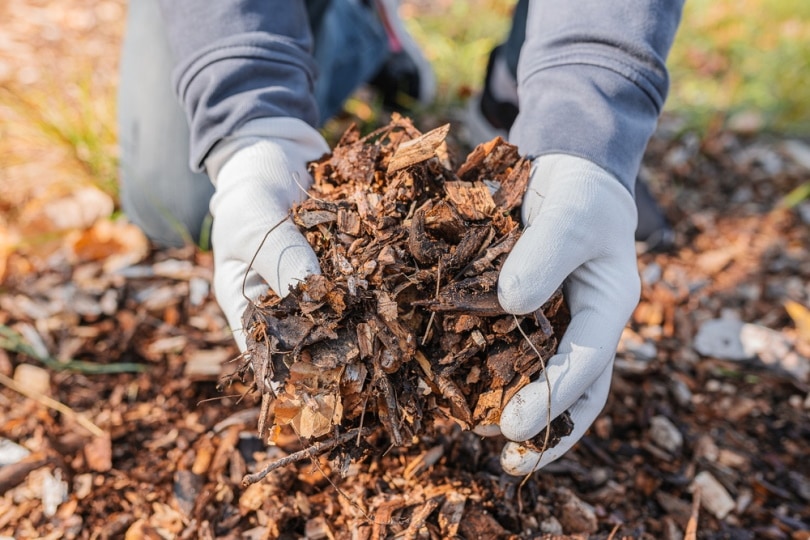
Mulching is a cheap and reliable method of eradicating grass from a garden. This method involves covering the plants with wood chips, straws, and kitchen scraps to control weeds and retain soil moisture. These materials provide a shade that prevents grass from growing and spreading in your vegetable patch.
When you mulch your garden, you will be able to permanently remove grass without having to rely on harmful chemical herbicides. A mulch layer will prevent new grass from growing and taking over your yard.
Mulching is a great way of maintaining a grass-free and healthy garden. It also reduces the need to water your plants regularly. Additionally, mulch attracts earthworms and other organisms that help decompose organic materials and provide nutrients to the soil.
6. Use Alcohol Spray
You can also utilize alcohol spray to control the spread of grass in your vegetable garden. When alcohol is sprayed on a garden, it sucks the moisture from the soil around the grass, causing it to dry up. Without water, the grass will gradually wither and die. So, all you have to do is uproot the dead grass, bag it and dump it in a trash bin or add it to the compost.
7. Use Baking Soda
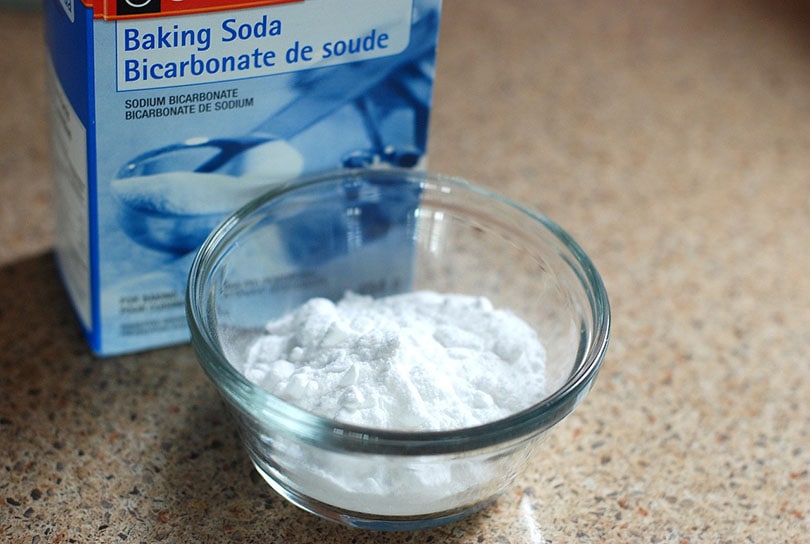
If you are looking for a natural and eco-friendly weed killer, then baking soda is your best bet. Like vinegar, baking soda kills grass by absorbing moisture when applied to the plant. You only need a teaspoon of baking soda to dehydrate and kill the grass growing in your garden.
For optimum results, first wet the soil until it is moist but not oversaturated with water. Then, sprinkle a teaspoon of baking soda over the top of the grass and the soil surrounding the plant’s base. Let the plant absorb the powder and reapply after a month if the grass continues to thrive.
Unfortunately, this method is only ideal in areas that don’t have a high salt concentration. So, baking soda may not be able to get rid of grass growing near a beach, but will work great on average soil.
8. Try Chemical Herbicides as a Last Resort
Though not recommended, you can also use store-bought chemical herbicides to eliminate grass from your vegetable garden. Depending on the grass you want to eliminate, consider choosing a selective brand to avoid killing the surrounding vegetation when caught in the crosshairs. So, you must carefully follow the directions on the herbicide label.
Ensure that the chemical only kills grasses and is not specific to broad-leaved plants. Also, check for the expiry date before applying the chemical to your garden. It typically takes several days for herbicides to soak into the grass. So, grass seeds in the soil may not be harmed and may later germinate. You may require more than one application to remove grass from your vegetable patch.
Most weed killers retailing in the market, like Roundup, contain glyphosate, a chemical that kills broadleaf weeds and grasses. The product will also kill other plants that they get into contact with. So, Roundup should only be sprayed on plants on rare occasions. Also, weedkiller chemicals can be harmful to the human body. So, ensure that you have protective clothing such as long pants, gloves, long sleeves, and a face mask when applying industrial herbicides.
Conclusion
There are many reasons why you need to get rid of grass from your vegetable garden. If left unchecked, grass will rapidly spread in a garden and choke out your vegetables. Getting rid of grass might be a boring and laborious endeavor, but it is necessary to ensure that you get a bountiful harvest from your garden.
There are several methods that you can use. Your choice will depend on the size of your patch and the level of grass infestation. If working with a small area, you can simply pull out the grass with your hands, or spray eco-friendly products such as vinegar, alcohol, and baking soda. An even easier option would be to pour boiling water on the grass. Just make sure that you only pour on the targeted plant.
If working with a large vegetable garden, you can lay some mulch or cover the patch with a transparent plastic material to dehydrate the grass and kill it. If these natural methods don’t work, you can opt to use chemical herbicides such as RoundUp as a last resort. However, these chemicals are harmful to the environment and should only be used on very rare occasions.
Featured Image Credit: Alexander Lukatskiy, Shutterstock
Contents


